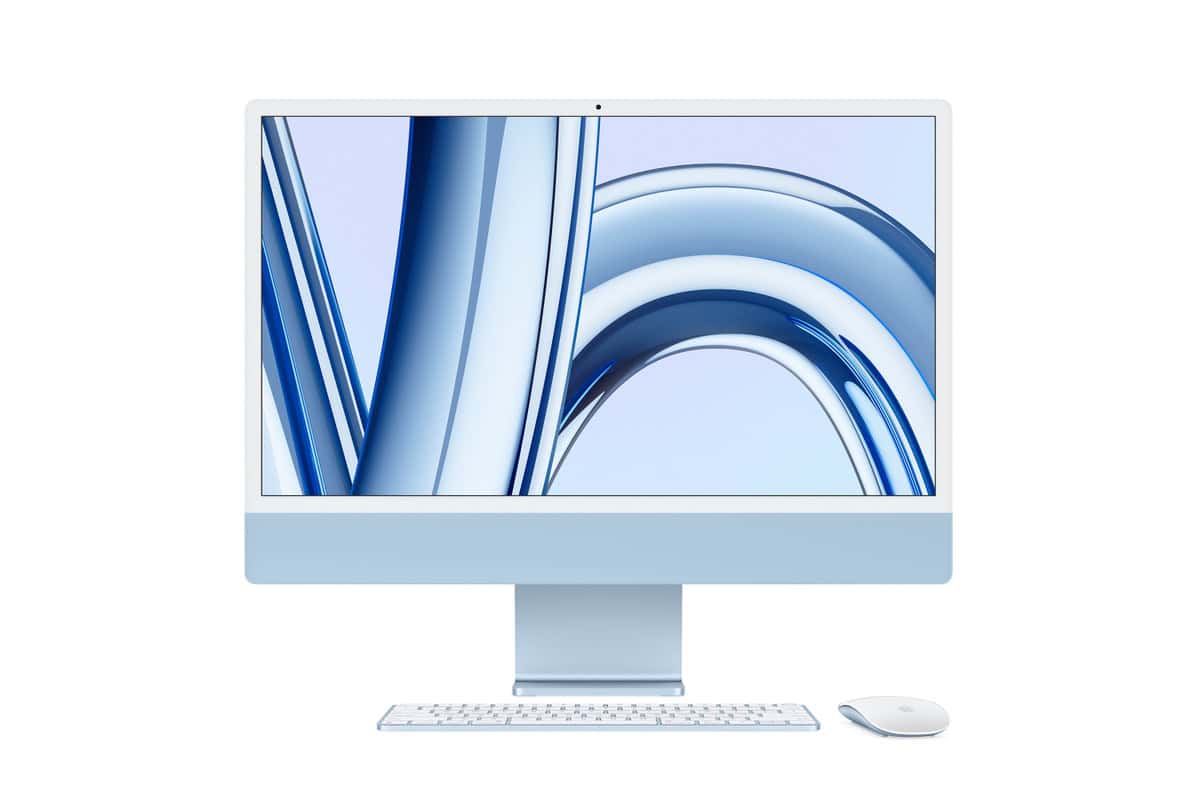When people invest in an iMac, they often wonder about its lifespan. An iMac’s longevity can vary, but on average, these machines tend to serve reliably for several years. Apple’s design and build quality contribute to the durability of iMacs, and with proper care, they have been known to last well beyond their expected lifespan. Factors such as software updates and hardware capabilities will affect how long any one machine remains functional and up to date.
The longevity of an iMac also depends on the tasks it’s used for. Those used for basic activities like web browsing and word processing may endure longer than those running intensive graphic design or video editing software. The ability to upgrade components such as RAM, though limited in certain models, can also extend an iMac’s usability. Regular maintenance, both physical cleaning and software management, plays a significant role in preserving the health of an iMac.
The iMac has built a reputation for durability, sleek design, and reliable performance. Still, like any computer, it won’t last forever. If you’re wondering how long an iMac can serve you before slowing down or becoming obsolete, this guide breaks down the average lifespan, performance factors, and tips to extend its use.
⏳ Average Lifespan of an iMac
- Typical lifespan: 7–10 years with proper care (source: Maciverse).
- Software support lifespan: Apple usually provides macOS updates for 7–8 years after release (source: Macworld).
- Hardware lifespan: Components like hard drives, GPUs, and fans may wear out sooner, especially under heavy workloads.
Rule of thumb:
- Light use (web, email, streaming): 8–10 years possible.
- Professional use (design, video, coding): 5–7 years before upgrades are needed.
⚡ Key Performance Factors
1. Hardware Specifications
- Processor & RAM: Newer iMacs with Apple silicon (M1/M3 chips) will last longer than older Intel models.
- Storage type: SSDs are faster and more durable than HDDs, extending usable life.
2. Software Updates
- Once your iMac stops receiving macOS updates, security risks increase.
- Unsupported Macs can still run, but may feel outdated for modern apps.
3. Usage Patterns
- Light users: Browsing, streaming, office tasks → machine lasts longer.
- Heavy users: Video editing, 3D rendering, gaming → hardware wears faster.
4. Maintenance & Care
- Regular cleaning prevents overheating.
- Replacing thermal paste, upgrading RAM/SSD (on older models), and keeping macOS updated can extend life.
🛑 Signs It’s Time to Replace Your iMac
(Source: MakeUseOf)
- No longer eligible for macOS updates.
- Apps crash frequently or won’t install.
- Hardware issues (screen, GPU, fans, storage failures).
- Performance bottlenecks even after upgrades.
🛠️ Tips to Prolong Your iMac’s Life
- Upgrade storage: Swap an HDD for an SSD on older models.
- Add RAM (if possible): Helps with multitasking and newer software.
- Keep it cool: Avoid dust buildup and overheating.
- Use external drives: Reduce wear on internal storage.
- Regular backups: Protects data in case of sudden failure.
✅ Bottom Line
An iMac can last 7–10 years, depending on usage and maintenance. Apple’s software support window is the biggest factor in determining practical lifespan. With light use and upgrades, many iMacs remain functional well beyond a decade, though professionals may need to upgrade sooner for performance.
Key Takeaways
- iMacs have a robust lifespan with adequate maintenance.
- Usage intensity and upgradability influence an iMac’s longevity.
- Regular updates and cleaning are key to prolonging iMac functionality.
Imac Longevity Factors
The life of an iMac can vary based on its hardware configuration, software updates, and how it’s used and maintained.
Hardware Considerations
iMacs boast diverse internal components that affect longevity. The CPU (central processing unit) determines processing power. Models with faster CPUs generally last longer. RAM (random access memory) also plays a key role. More RAM allows more efficient multitasking. An iMac’s SSD (solid-state drive) contributes to speed and has no moving parts, making it less prone to failure than traditional hard drives. High-quality hardware like these can enhance an iMac’s durability.
Software and Operating System Updates
Software updates and macOS upgrades keep an iMac running smoothly. Updates can improve performance and security, adding years to the machine’s life. However, over time, older models may not support the latest updates, limiting their lifespan.
Maintenance and Usage Patterns
How owners use and care for their iMac significantly impacts its lifespan. Heavy tasks like gaming and video editing push the system harder, which can lead to wear and stress to components. Regular cleaning to prevent dust build-up and avoiding physical damage are practical ways to maintain an iMac. Good habits reduce the risk of overheating and logic board issues. Proper maintenance paired with mindful usage can extend the life of an iMac.
Assessing Imac Health and Upgradability
When assessing an iMac’s health, look for performance dips and assess the potential for upgrades. An iMac’s life can extend considerably with proper maintenance and timely upgrades, although every model has its set lifespan.
Signs of Aging and Performance
Mac users might notice that an iMac slows down or starts having random shutdowns as it gets older. Visual glitches or the inability to run new applications are clear indicators of aging. Major hardware damage can contribute to a reduced lifespan. To keep track of an iMac’s health, monitor its speed during normal tasks and watch for any persistent issues.
Upgrading Options and Limitations
Some iMac models have the option to upgrade components such as storage and memory. However, this is not true for all. Models after 2014 often have soldered parts, which limit upgrading options. Replacing or adding an external hard drive can work around these limitations. If an iMac experiences software issues, reinstalling macOS could improve its performance without needing to upgrade hardware.
End of Support and Obsolescence
An iMac becomes obsolete when it no longer receives security updates, typically years after release. Knowing an iMac’s obsolete status is vital for security. Models like the iMac Pro and Mac Studio will have longer support life, while older machines may lose support earlier. Use the iMac until it no longer supports your necessary applications or it becomes a security risk due to vulnerabilities.







